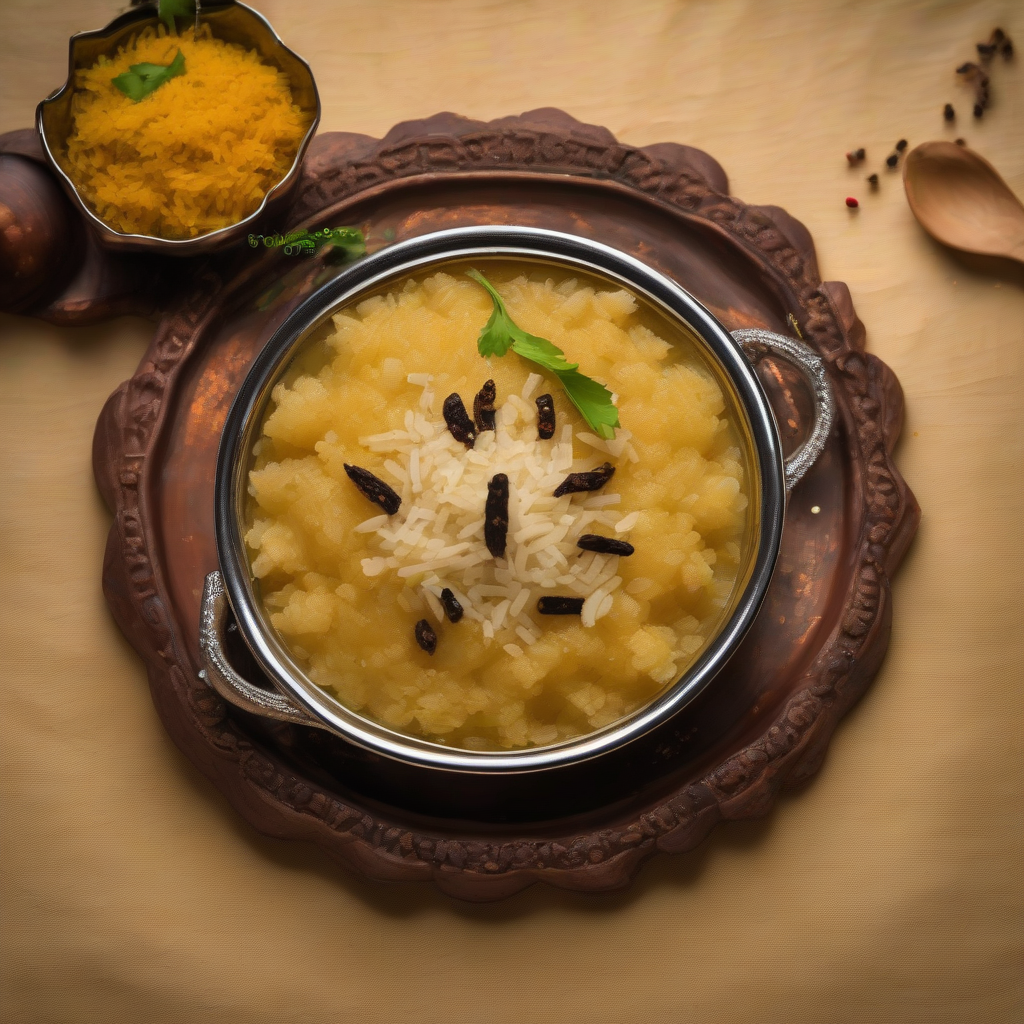Pongal-icious! Let’s Cook Some Khara Pongal, Yaar!
Namaste Doston! Kem cho? Kai Po Che! Chef Curry Do’pyaza here, back in your kitchens and ready to spice up your life! Today, we’re diving into a South Indian classic, a dish that’s as comforting as a warm hug on a chilly morning: Ven Pongal with Ghee and Pepper!
This isn’t just any rice and lentil dish, folks. This is Khara Pongal – savory pongal! Think of it as the Indian cousin of risotto, but with a desi twist!
When Do We Pongal?
Pongal is a star during the harvest festival of Thai Pongal in Tamil Nadu, usually in mid-January. It’s a time for celebrating the bounty of the land, giving thanks to the sun god, and enjoying delicious food with family. But honestly, you don’t need a festival to enjoy this delightful dish. Pongal is perfect for a lazy Sunday brunch, a quick and satisfying lunch, or even a light and flavorful dinner. It’s especially great during the cooler months, when you crave something warm and comforting.
A Little Pongal History, Just for Fun!
Pongal has been around for centuries! It’s believed to have originated in the Chola dynasty. The earliest versions were simpler, but over time, cooks like you and I have added our own touches, creating the delicious variations we enjoy today.
Ready to Get Cooking?
Prep Time: 10 minutes
Cook Time: 30 minutes
Ingredients – The Magic Makers!
- 1 cup Pacha Arisi (Raw Rice) – Use short-grain rice for the best texture.
- ½ cup Paasi Paruppu (Yellow Moong Dal) – This adds a creamy richness.
- 4 cups Thanni (Water) – Adjust depending on your desired consistency.
- 1 teaspoon Jeeragam (Cumin Seeds) – For an earthy aroma.
- 1 teaspoon Milagu (Black Peppercorns) – Freshly crushed is best!
- 1 inch Inji (Ginger) – Finely grated, for a zesty kick.
- 1 sprig Karuveppilai (Curry Leaves) – Adds a fragrant South Indian touch.
- ¼ cup Nei (Ghee) – The golden elixir! Don’t skimp on this!
- 1 teaspoon Uppu (Salt) – To taste.
- A pinch of Hing (Asafoetida) – Optional, but adds a unique flavor.
Let’s Make Pongal – Step-by-Step!
- Roast the Goodness: In a dry pan, gently roast the moong dal for a few minutes until it turns light golden and fragrant. This step enhances the flavor.
- Wash and Combine: Wash the rice and roasted dal together until the water runs clear. This removes excess starch.
- Pressure Cook (or Cook on the Stove):
- Pressure Cooker Method: Add the rice, dal, water, salt, and a pinch of hing (if using) to a pressure cooker. Cook for 3-4 whistles on medium heat. Let the pressure release naturally.
- Stovetop Method: In a heavy-bottomed pot, add the rice, dal, water, salt, and hing (if using). Bring to a boil, then reduce the heat to low, cover, and simmer for about 25-30 minutes, or until the rice and dal are cooked and the mixture is soft. Stir occasionally to prevent sticking.
- The Ghee Tadka (Tempering): While the rice and dal are cooking, prepare the tempering. In a small pan, heat the ghee over medium heat. Add the cumin seeds and let them splutter. Then, add the crushed peppercorns, grated ginger, and curry leaves. Fry for a few seconds until fragrant.
- Combine and Serve: Once the rice and dal are cooked, gently mash them with a spoon or ladle until you get a creamy consistency. Pour the ghee tempering over the pongal and mix well. Serve hot!
Chef Curry’s Tips for Pongal Perfection!
- Ghee is Key: Don’t be shy with the ghee! It adds richness and flavor that’s essential to Pongal.
- Consistency is King: Adjust the amount of water to achieve your desired consistency. Some people prefer a more watery pongal, while others like it thicker.
- Fresh is Best: Use freshly ground black peppercorns for the most intense flavor.
- Roasting Matters: Roasting the moong dal adds a nutty depth to the pongal.
Pongal Your Way – Cooking Variations!
- Gas Stove: Follow the stovetop method described above.
- Induction Stove: The same as the gas stove method, adjust heat settings as needed.
- Pressure Cooker: My preferred method for speed and convenience!
- Slow Cooker/Crockpot: This will take several hours, but it’s a great way to set it and forget it! Cook on low for 4-6 hours, adding extra water if needed.
- Microwave: Not recommended for best results, but in a pinch, you can microwave the rice and dal with water until cooked, then add the tempering.
- Oven: You can bake the rice and dal mixture in a covered dish with water at 350°F (175°C) until cooked.
- Air Fryer: I would not recommend making pongal in an air fryer.
Nutritional Nuggets (Approximate per serving):
- Calories: 250-300
- Protein: 8-10g
- Carbohydrates: 40-45g
- Fat: 8-10g (mostly from ghee, which is considered a healthy fat in moderation)
Serving Suggestions – Pongal Partners!
- Sambar: A classic pairing! The tangy sambar complements the mildness of the pongal perfectly.
- Coconut Chutney: A refreshing and flavorful chutney that adds a touch of sweetness.
- Vada: Crispy, savory lentil doughnuts that are a delightful contrast to the soft pongal.
- Plain Yogurt (Dahi): A cooling and soothing addition.
Now it’s your turn!
Go ahead, try this recipe at home. It’s simpler than it sounds, and the results are incredibly rewarding. Share this delicious dish with your family and friends. They’ll thank you for it!
Happy Cooking, Doston! Until next time, keep your pots simmering and your hearts full!
Your friend,
Chef Curry Do’pyaza!
